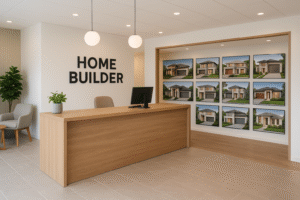Our client is a leading Australian importer of building fittings & fixtures (toilets, vanities etc.) from China, wholesaling to many of the household-name retailers across Australia. Growing rapidly at a CAGR (Compound Annual Growth Rate) of over 30%, their previous 12 months’ turnover was about $35m.
The Challenge
With no end in sight to such rapid growth, the business’s working capital requirements were also rapidly growing.
Having been with their existing bank for several years with adequate support (via an Overdraft and later an Import Trade Finance facility), they asked the bank to increase their facilities from $5m, up to $7m.
After a long delay, the banker finally returned to tell the CEO that only an extra $1m in credit could be facilitated.
Frustrated, knowing that this wouldn’t last long, the CEO called STAC to find out what other options might be available.
How STAC Assisted
Whilst the CEO was asking us how to get the $7m he wanted, our immediate approach was similar to what we often do: “whoa, hold your horses!”. Simply put, following our Advisory approach (as opposed to a simple finance brokerage “I’ll get you what you ask me for”), our initial feeling was that the true need wasn’t actually what they were asking for (the client is NOT always right!).
Considering the rate of growth and the size the company had got to, we told the CEO that a 3-way forecast (P&L, Balance Sheet and Cash Flow) was critical. We could do it for them, or they could build it. With a new CFO starting at the time, putting this together was task #1 for them.
With the 3-way forecast completed – considering not only profits but also the impact of increasing order quantities, inventory levels and size & term of debtors – the problem was bleedingly obvious to everyone:
Forget about an additional $2m (let alone only $1m); that will run out within 3 months! We need facilities of $10 to $12 million!
If they didn’t get facilities of $10-12m in place, the CEO would have to order his sales staff to put the handbrake on. Not ideal for a company that has the ability to generate rapid increases in sales and profits.
With the need clearly defined, STAC then had to assess how to go about putting in place facilities at this level.
Considering the balance sheet, the rate of growth and the lack of any real estate security to offer banks, it was clear that an increase to this degree would not be achievable from a bank under a Trade Finance and/or Overdraft facility.
The decision was made to canvas options in the market, with two potential forks in the road to seek & assess:
- Banks and relatively standard non-bank Trade & Debtor financiers; and
- Alternative Supply Chain Financiers that serve corporate/institutional borrowers, which we considered might be possible given that the borrower was approaching “entry-level” size for these types of financiers.
The Outcome
After negotiating potential structures with several banks (including the incumbent) and non-bank lenders, we ended up with multiple options for the client to consider, each with varying pros & cons.
Most interestingly – one of the leading options was $12m in facilities from the existing bank, who had originally stated that $7m was their maximum lending capacity – which ultimately was considered by the CEO and CFO to be the best choice.
How was it that the same bank agreed to provide $5m more funding than they originally said was their maximum?
The bankers noted the value of STAC having put the deal structuring, credit and risk analysis to them “on a silver plate”, which helped them gain a deeper understanding of how the business operates, where the risk truly lay – and how to structure the deal in a manner that protected the bank’s interests – and therefore gave them sufficient confidence to support the business.
On this final point, although we always act in our clients’ best interests, part of the value we add in negotiations is our ability to have “banker to banker conversations”; from our first-hand experience of having previously been career bankers, we also know how and why bankers think the way they do – which in turn allows us to negotiate structures, conditions and covenants that will give a bank comfort about their lending, while not creating potential adverse risks to our client.
If If you’re facing hurdles in negotiating the funding your business needs to support your future strategies, give us a call and let’s discuss whether we might be able to get better outcomes for you.



